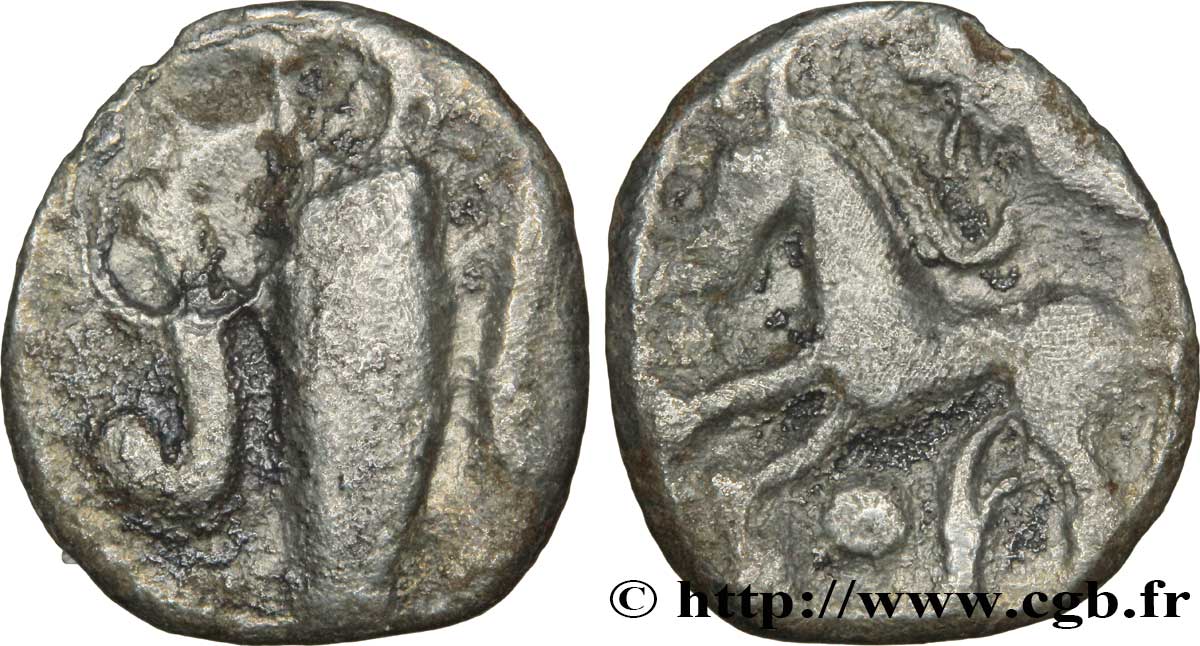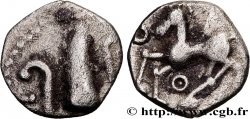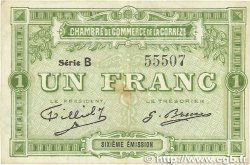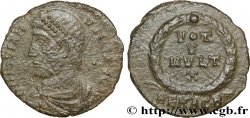E-auction 54-23757 - bga_262688 - GALLIA - CALETI (Area of Pays de Caux) Denier ou obole à l’aigle en forme d’amphore
Чтобы принять участие в торгах, вы должны войти в систему и стать подтвержденным участником аукциона. Войдите, чтобы сделать ставку. Ваш аккаунт будет подтвержден в течение 48 часов. Не ждите до закрытия торгов, чтобы зарегистрироваться.Сделав ставку на данный товар, вы вступаете в юридическое соглашение на покупку выбранного товара и нажатием кнопки «Сделать ставку» подтверждаете принятие вами условий интернет-аукционов cgb.fr.
Ставка может бить сделана только в полном эквиваленте евро. Торги закроются согласно времени, указанному в описании товара, все ставки, сделанные после закрытия торгов, учитываться не будут. Не следует откладывать предложение вашей ставки до последнего момента, так как система может не успеть обработать вашу заявку, и ваша ставка не будет принята. Более детальную информацию вы найдёте здесь: FAQ по интернет-аукционам.
БЕСПЛАТНО.
БЕСПЛАТНО.
| Оценить : | 145 € |
| Цена : | 88 € |
| Максимальная предлагаемая цена : | 96 € |
| Конец торгов : | 28 April 2014 15:18:00 |
| Участников : | 9 Участников |
Тип Denier ou obole à l’aigle en forme d’amphore
Дата: c. 60-50 BC.
Металл: silver
Диаметр: 11 mm
Ориентация осей монеты: 12 h.
Вес: 0,67 g.
Редкость: R3
Комментарии о состоянии
Petite monnaie sur un flan court et régulier, avec des types assez nets. Patine grise
Ссылки в каталоге: :
Лицевая сторона
Аверс: легенда: ANÉPIGRAPHE.
Аверс: описание: Aigle de face, très stylisé, la tête à gauche.
Обратная сторона
Реверс: легенда: ANÉPIGRAPHE.
Реверс: Описание: Cheval à gauche.
Комментарий
Cet exemplaire a un poids particulièrement léger (50% par rapport à la moyenne) et un diamètre réduit. Il s’agit vraisemblablement d’une division (?).
Ce type de denier est exceptionnel et encore mal connu à cause de sa rareté. Recensé dans le Supplément du Nouvel Atlas, les auteurs précisent à son sujet que “plusieurs exemplaires de ce type fruste, de facture malhabile, proviennent des proches environs d’Etretat (Seine-Maritime)”.
J.-M. Doyen a récemment publié tous les exemplaires connus jusqu’alors, avec une tentative de classement (cf. BCEN).
This specimen has a particularly light weight (50% compared to the average) and a reduced diameter. It is probably a division (?). This type of denier is exceptional and still little known because of its rarity. Listed in the Supplement to the New Atlas, the authors specify that “several specimens of this crude type, of clumsy workmanship, come from the nearby surroundings of Etretat (Seine-Maritime)”. J.-M. Doyen recently published all the specimens known until then, with an attempt at classification (cf. BCEN)
Ce type de denier est exceptionnel et encore mal connu à cause de sa rareté. Recensé dans le Supplément du Nouvel Atlas, les auteurs précisent à son sujet que “plusieurs exemplaires de ce type fruste, de facture malhabile, proviennent des proches environs d’Etretat (Seine-Maritime)”.
J.-M. Doyen a récemment publié tous les exemplaires connus jusqu’alors, avec une tentative de classement (cf. BCEN).
This specimen has a particularly light weight (50% compared to the average) and a reduced diameter. It is probably a division (?). This type of denier is exceptional and still little known because of its rarity. Listed in the Supplement to the New Atlas, the authors specify that “several specimens of this crude type, of clumsy workmanship, come from the nearby surroundings of Etretat (Seine-Maritime)”. J.-M. Doyen recently published all the specimens known until then, with an attempt at classification (cf. BCEN)








 Cообщить об ошибке
Cообщить об ошибке Распечатать страницу
Распечатать страницу Отправить мой выбор
Отправить мой выбор Задать вопрос
Задать вопрос Consign / sell
Consign / sell
 Информация
Информация















